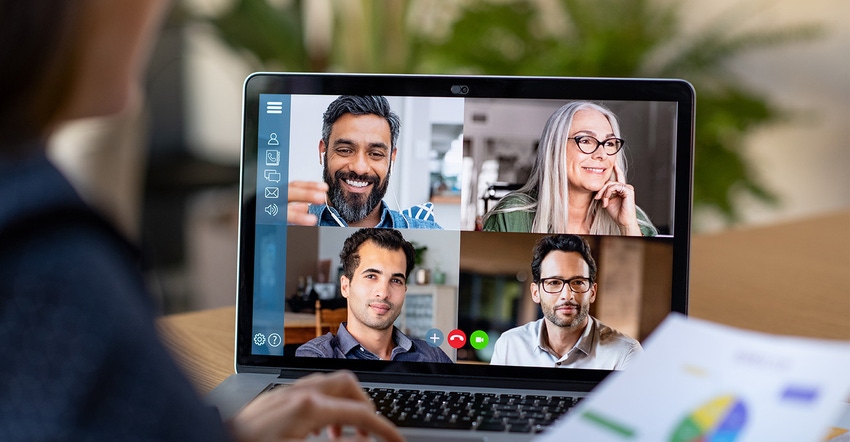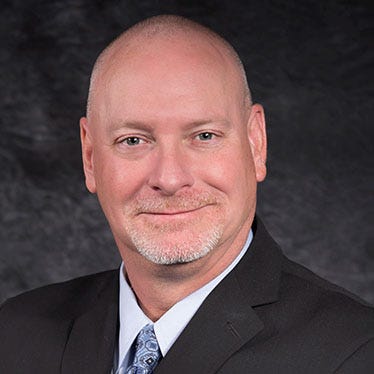The ‘new normal’ of pandemic life could mean reassessment of how brand owners connect with contract manufacturers. Technology is key to transitioning much of the lengthy work off site.

By the time you read this we will be well into our “new normal” of social distancing, washing/cleaning/sanitizing on a regular basis, and conducting business in a virtual mode. I can’t help but think which of these practices, and new ones as yet unknown, will stick with us after the COVID-19 pandemic has run its course. Similar to 9/11, airport screenings have taken on a whole new look, while security screenings at all events are now the norm.
Maybe there will be a “new normal” on how we conduct our business with our contract manufacturing partner. Maybe that new normal will involve entirely virtual communications, with maybe a once-a-year visit to review products. With that scenario in mind, here are some ideas for capitalizing on the new normal.
These are the three stages of scaling up, what they look like today, and what the virtual model might look like in the very near future.
1. Benchtop – If the contract manufacturer has an R&D/engineering group, this step will be their first attempt at replicating your gold standard, which is your target product. It is exactly in the middle of all your product specs and represents the product you’d like your customers to get every time they purchase. Realizing this is not a practical requirement, the contract manufacturer will make a prototype in the lab to see how close they can get. In the past, it would have been a strong suggestion to have the brand owner be on site for these experiments, to provide direction as well as work side by side with the R&D formulator to create the best gold standard possible. This then becomes the new gold standard. In the virtual model, setting up a video link to the lab and watching while the formulator works on the product would be the best way to work “side by side.” I suggest both parties invest in higher quality video/audio equipment so the connection issues that plague so many remote conference calls can be avoided. There are numerous platforms that can host these calls—Skype, Google Hangouts, WhatsApp, Zoom, WebEx and BlueJeans. I suggest trying them all out with a neighbor or colleague and see which works best for your needs.
A large issue with this remote model will be examining any samples/prototypes made. Since COVID-19 cannot be transferred via food, that should not be an issue. However, primary and secondary packaging can harbor the virus for periods of time that might make them viable when they reach your door. For this I would recommend the contract manufacturer invest in some form of package sanitizing system. Whether it be UV light, a sanitizing agent, or vacuum sealing and packaging, work with your contract manufacturing partner to find a solution that you feel comfortable with and use the video link to watch/record the process for traceability purposes.
2. Pilot – Here, the contract manufacturer may have smaller scale equipment in an R&D lab that they have calibrated to their production equipment, or they may opt to run a smaller batch on production equipment. In either case, the goal with these trials is to determine the variability the product will experience when transferred to production.
These tests are not simply another way to show you prototypes, and is why in the past it would be almost a requirement for the brand owner to be on site to test the product at the ends of the specifications to ensure it still meets the customer needs. Variability is usually one of the parameters contract manufacturers understand and live by, but brand owners do not necessarily consider after they provide the gold standard. It is one of the most important product traits the brand owner and contract manufacturer must negotiate and agree on prior to production startup.
On site, the brand owner would test numerous iterations of the product, from the first samples off the line throughout to the final product from that batch. In the virtual model, unless you want the contract manufacturer (or brand owner) to incur a large cost of packaging and shipping all those samples to you, some form of compromise will have to be struck. I suggest the brand owner take the time during the benchtop stage and test different variables of the finished product specs. Try raw material variability to start, different formula variations the formulator might suggest and, if possible, different ends of the processing spectrum. You can review these samples at home and set the preliminary limits of your specifications from them.
Then during the pilot stage, the contract manufacturer, again via video/audio link, can show you the production and sample pulls. You can view the sample pulls for color, shape (if a tablet), texture (if a powder) and variability. This is where a high quality AV system with HD will be the most beneficial. You will need to rely on the contract manufacturer for organoleptics (taste and smell), as well as any content testing you require. Again, helping the contract manufacturer understand your limits of specifications early will help this process move onward to the production trials.
3. Production trial – If the pilot stage was not run on production-scale equipment, or the batch size was too small to see the limits of variability, a full-scale production trial would be in order. Here, the contract manufacturer stages a full rehearsal of the production, from raw material ordering/receiving/testing, through staging and production, finished product testing and packaging.
While it is not usually necessary for the brand owner to be on site for this stage (especially if the first two stages were successful), you will still want to see numerous samples of product from various points in production to review product variability at production scale. In the past, this would be optional on site for the brand owner, but reviewing the samples is a must. In the virtual model, we would refer back to the points from the pilot stage, with the possibility of having some of the collected samples sanitized and packaged for your review.
Keep in mind, the contract manufacturer should be collecting numerous samples throughout this trial, as many times a successful trial results in salable goods. You should only see a few of these samples with the option to see more if there are concerns.
Even with the world moving toward a more virtual model, there are ways you can still conduct a thorough scale-up of your product without having to be on site at the contract manufacturer. The first step is for both sides to invest in high quality AV equipment using similar software platforms. After that, be a virtual “on site” brand owner, train the contract manufacturer on the gold standard and limits of specifications early, view as much of all three stages as you can, and finally be available to answer any questions that may come up. While you might not be there in person, a virtual “on site” brand owner, if done well, will result in the same, high quality, repeatable product that both the brand owner and contract manufacturer will be satisfied with.
Kurt Schneider is the president of Tech Bridge West and has worked in the consumer goods industry since 1986, including in product/process development, quality/regulatory and manufacturing/operations.
About the Author(s)
You May Also Like






.png?width=800&auto=webp&quality=80&disable=upscale)